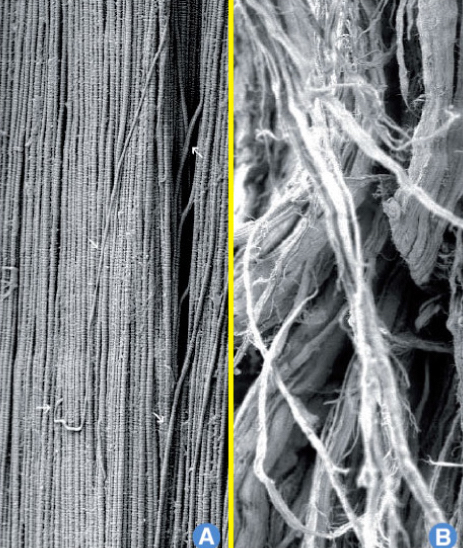Just after a session at the track, suddenly your calf is hurting. It is not just a simple post-workout muscle soreness. You are limping and even walking is painful. You have to admit the shocking truth. You’re injured. You might have pulled a muscle. Now the question is, what should you do? Because the doctor might tell you “stop running for 2 months”, you’re not going to consult with them. In reality, more often than not ( if you didn’t fracture your bone), a total rest is not a good idea, it’s even a bad idea. So what should you do then? The answer is just to keep moving, and sometimes, keep running a bit.
Complete rest or not?
Back in the winter of 2013, I was training for the Seoul marathon. I was in the middle of a track session. Little did I know that it was going to be the last one of the season. My shin started to hurt, it was sore to the touch, and walking was a bit painful. So I went to a hospital (Saint Luke hospital in Tokyo) and went to the orthopedics department. After two hours of waiting and an X-ray, I had the shortest consultation of my life: 3 minutes. The guy asked me how it happened. I told him that I ran. Then without even looking at my leg he said “stop running for 2 months and come back”.
That was the worst advice I had ever received in my life
Fast forward a few years later, after digging into lots of research and studying for my fitness certifications, I’ve found that in many cases
Keeping the injured area active is very important for recovery. Rest does not fix the problem.
No, just icing is not enough. For the rest of this article let’s assume that it is not a stress fracture. Let’s take a deep dive into an example to understand what’s going on micro level.
Let’s imagine you pulled your hamstring
The body is primarily made up of something called collagen. It’s configured differently in the body for different purposes. Collagen is very strong stuff. It approaches the tensile strength of steel, yet it’s highly flexible. The structural organization of the collagen fibers produces different properties. Depending on the tissue, this orientation can be specialized to provide resistance to force, tension, stretch, compression, pressure, elasticity or any combination thereof.
All collagen fibers within a single tissue are specifically aligned so that they can respond to specific loads. The electron micrograph below shows a healthy collagen fibers running parallel to each other in the same linear direction.


This arrangement is similar to straws in a box. Each individual straw is a cylinder that can support load in one direction very well, at the expense of supporting load from another direction. If you hold a straw upright on the table, you can push pretty hard before it buckles. However, if you pinch the sides together, it takes almost no force to collapse the straw.
You want the straw oriented so that it can best respond to the kind of stress it will see, and bundling several straws together produces a very strong tissue.
The orientation of the collagen fibers makes it possible for your connective tissues to deal with incredibly high forces that they will deal with in sports like running. So what happens then when you get injured. What happens when you tear these straws, how will the body repair them if you take a complete rest? Let’s dive into an example to find out.
Familiar example
Now let’s take an imaginary runner, and let’s call him Bob.
Bob, during a 10km race, hears a pop on his hamstring. He decides to keep going and to finish the race. Later on he finds out that it is a mild strain. So he decides to rest, is getting lots of sleep, a good diet, and is on his way to eliminating his symptoms. The body repairs the tissue with scar formation. Through his self rehab process, all he did was to rest or to do some “test” run here and there and did some stretching. After being pain free for a couple weeks he is cleared to resume training and work his way back to full volume.
After 3 weeks of running at full intensity, his symptoms return.
Upon assessing, the tear did repair itself after the initial injury; however, it repaired in a very disorganized fashing. All of his collagen fibers, or “straws”, are not oriented in the same direction, making the repair less able to withstand the stresses in running. The “healed” tissue is significantly weaker than it was preinjury, making reinjury likely.

Healthy collagen (A), much like parallel straws, is aligned in a specific direction so it can respond to specific stresses. Damaged collagen fibers (B) change the architecture and compromise tissue function.

The goal of healing injury is always optimal repair.
Rest doesn’t always yield stronger tissues. Sometimes the body needs to be assisted to help it repair correctly. Instead of focusing solely on the return to running, the aim should be to determine what unique mechanical factors caused the injury and normalize the tissue repair along the timeline. That is the work of a good physiotherapist.
This makes the difference between missing your race and running it successfully.
And so, if you get injured, can I keep running, can I run through an injury you might ask.
Can I run through an injury?
The goal is always the same: to ensure that the body is able to build up faster than training is breaking it down. I would just follow 3 simple rules
- On a scale from 0 to 10, pain during the run should never be greater than 3.
- Pain should not be severe to the point where you limp during or following the run.
- The long run should not be more than half the regular weekly volume.
Listen to your physiotherapist
And so when you get injured, not only should you still be running (of course at a significantly reduced volume ! ) but also perform eccentric rehabilitation strengthening exercises that reproduce/mimic the cause and origin of the injury.
The combination of both will help regorganize the fibers in parallel lines, hence ensuring optimal repair. This is why listening to your physio is crucial when they give you exercises to do.
More often than not the “doctor” will have no clue.
And if the only thing they can say to you is “rest for 4 weeks” without even asking you how you got injured in the first place, it means they probably have no idea and/or no interest in you. They just want their paycheck and you should just get the hell out of their office (because that’s what they want, and they just want to go home)
Rehab is boring and I prefer to rest
I hear you, it is mentally hard to suddenly stop what you were doing. It is depressing. When we are suddenly deprived of something we were attached to, something we were working hard on, to lose that something overnight is extremely frustrating. But in most cases…
Complete rest can actually make things worse
- From a psychological standpoint, not getting your regular dose of serotonin and endorphin can be depressing.
- After about one week of non activity and binging on Netflix you will start to lose your fitness.
- From a physiological standpoint, this is what complete rest can do:
| Bone | Weakens collagen structure and mineral density |
| Ligament | Decreases tensile strength |
| Tendon | Disorganizes collagen, decreases tensile strength |
| Muscle | Decreases contractile protein |
| Cartilage | Causes swelling and weakens binding agents |
There you have it. Complete rest will not solve anything, quite the contrary it is likely to make things worse. Of course there are some cases where complete rest is mandatory (e.g. you completely fractured your tibia). Keeping some activity to maintain physical and mental health is very important, even if you like staying on the couch out of depression.
Summary
- In most cases, complete rest is counterproductive and can actually make things worse
- Complete rest impairs optimal tissue repair and can increase risk of re-injury
- It’s ok to run “through” injury if the pain remains under 3 on a scale of 1 to 10
- Active recovery (cross training, reduced volume running) and rehabilitation strength training exercises are very important and must not be neglected
- Your doctor might have no f*** clue
- If your physio gives you exercises to do, by all means, do them
If you like the article, please share it and/or subscribe to the newsletter 🙂

I look forward to your we’ll write and useful articles. Liked the straw analogy.
Thanks Roger for reading and for your support as usual 🙂
Awesome advice, Harrisson. I agree on two points strongly: The doctors work to the lowest common denominator of human, so they have no clue as to what an athlete is doing. You need a specialist for this. Also, some sort of exercise will keep the body healthy and the mind sane!
Question, though, in that scale from 1-10, that is fairly subjective. I know that my wife’s 10 is about a 2 (excluding childbirth…then I’d rather run 100 kilometers with a broken leg). For someone that is bone-headed, A-type (if you know any), what advice would you give to help them hold back a bit?
Hi David !
That’s a fair point and it is true that 2 for you might be 11/10 for others !
So I would say:
_ if you already know your tolerance to pain is high, then you have scale it back to 1 or so
_ the pain during the run should not increase during the run. If it keeps creeping up that is a red flag, if anything it should be stable or get better as the muscles warm up
_ after 48h the pain should not increase ( not 24h because well.. You shouldn’t run everyday when injured anyways).
_ keeping some running might actually delay the soreness vs complete rest, but, it must decrease over time. After a week, worst case should be that pain has not increased and stays the same. If if feels better then its a good sign that the volume is adequate.
Very good advice. Of course, the Bob character does not refer to me….
Love this! Thank you for sharing such an insightful article!
Love this post! Thanks so much for sharing it 🙂